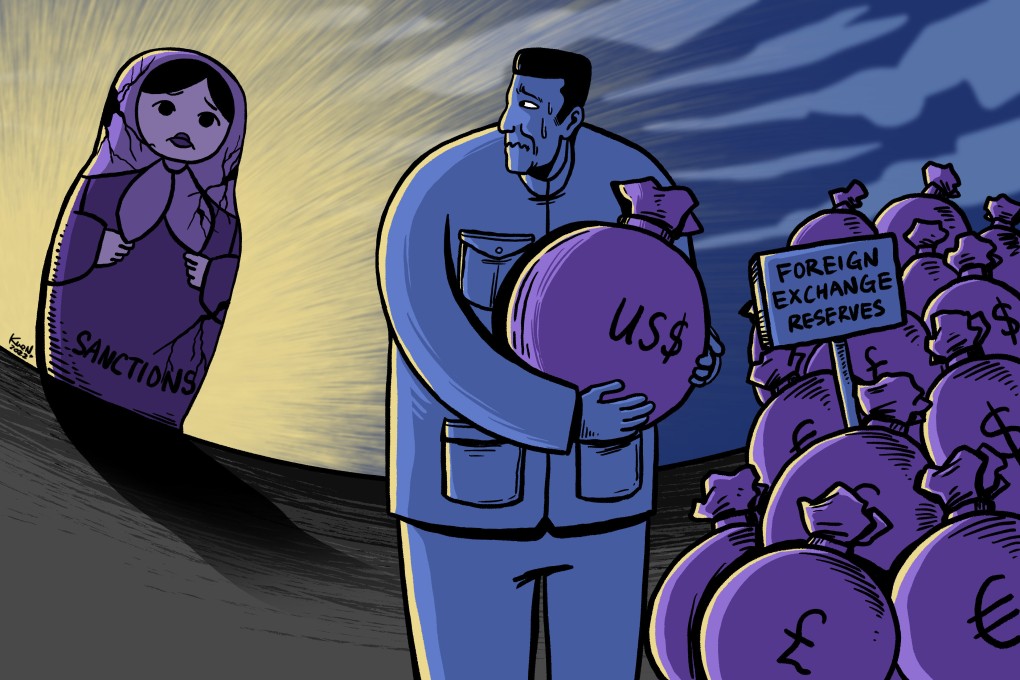China’s push to loosen US dollar dominance takes on new urgency after Western sanctions on Russia
- Some Chinese advisers are urging the government to overhaul the exchange rate regime and turn the yuan into an anchor currency, especially for the Asia region
- Worries are mounting that China could be kicked out of the Swift financial messaging system or cut off from its foreign assets if relations with the US worsen

Western sanctions on Russia over its invasion of Ukraine and spillover from US interest rate hikes have fuelled discussion in China about how to reduce reliance on the dollar system and establish the yuan as a strong, internationally-traded reserve currency.
With concerns growing in China about exposure to the US dollar system, some government advisers are urging authorities to overhaul the exchange rate regime and turn the yuan into an anchor currency, especially for the Asia region.
“Yuan issuance is currently anchored to the US dollar to a certain extent … It is by no means a long-term solution from the perspective of China’s future international status and development needs,” Huang Qifan, former mayor of Chongqing municipality in southwest China, told the Tsinghua PBCSF Chief Economist Forum a week ago.
This issue has become more urgent in the increasingly complex international power game
The yuan should be tied to China’s gross domestic product and sovereign credit, Huang said.
“An independent currency anchor would give China’s government bond yield curve and monetary policy, as well as the pricing of domestic financial assets, a benchmark,” he said.